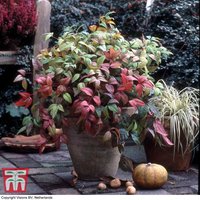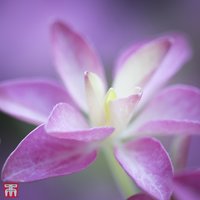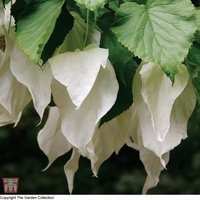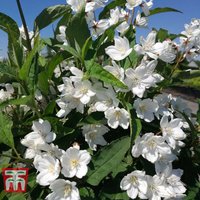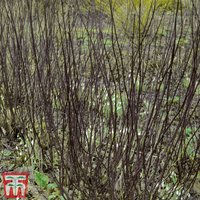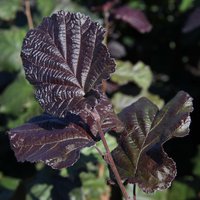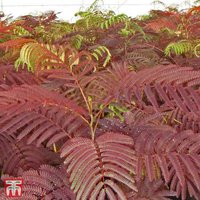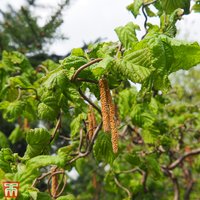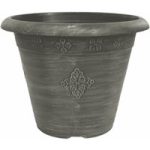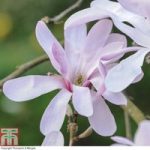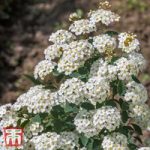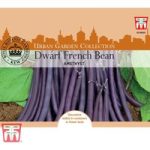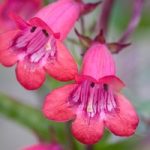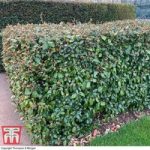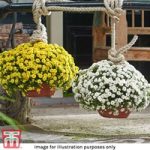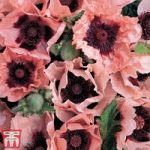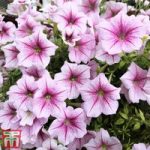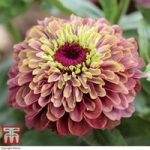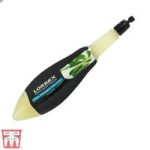Category Archives: Plants & Seeds
Exochorda x macrantha ‘Niagara’

The result of a cross between the popular E x macrantha ‘The Bride’ and E. racemosa, this stunning plant combines both its parents distinctive characteristics to create an upright, rounded deciduous shrub with masses of early season flowers in April and May, thus removing the ungainly straggliness of other exochordas.
Hydrangea paniculata ‘White Diamonds First Edition’
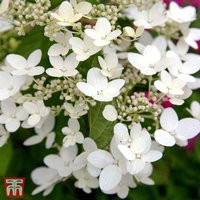
Covered in conical clusters of flowers from mid summer right through until autumn, the flowers of this lovely Hydrangea are pure white at first, gradually transforming to a dusky pink as the season progresses. Hydrangea paniculata ‘White Diamonds First Edition’ is compact but forms a wide, spreading shape. It grows well in the dappled shade
Nandina domestica ‘Fire Power’
Davidia involucrata var. vilmoriniana
Elaeagnus x ebbingei ‘Clone’
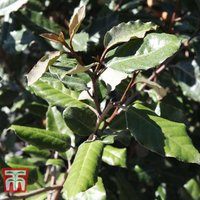
Silverberry has glossy green leaves with a dusting of silver on the undersides and small white flowers in late summer and early autumn which bring pleasant fragrance to the garden. Elaeagnus x ebbingei ‘Clône’ is a plant that is easy to grow and as it establishes itself you’ll see that it requires very little maintenance.
Euonymus europaeus ‘Red Cascade’
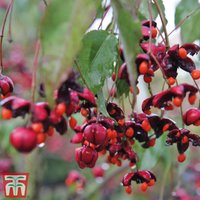
A large deciduous shrub, Euonymus europaeus ‘Red Cascade’, is renowned for its autumn foliage. Its leaves turn bright scarlet red. It is also known as a ‘Spindle Bush’, as the wood from the bush was used to make spindles, it will grow up to 3 metres and is suitable for herbaceous borders. The shrub has
Deutzia purpurea ‘Kalmiiflora’
Choisya x dewitteana ‘Aztec Pearl’

Choisya x dewitteana ‘Aztec Pearl’ is an award winning Mexican Orange Blossom shrub with dark green, glossy linear foliage and many clusters of white, star shaped flowers, that bloom in spring and again in late summer. It is very tolerant of a wide range of growing conditions, including exposed coastal gardens. Planted in a line
Cornus alba ‘Kesselringii’
Choisya ternata ‘Apple Blossom’
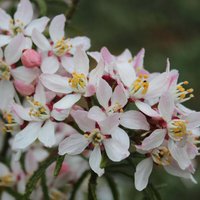
Choisya ternata ‘Apple Blossom’ is the first of its kind ? a Mexican Orange Blossom with bicoloured flowers! Deep pink buds open to reveal the fragrant blooms from to April and May, often followed by a second flush in late summer. This superb hardy shrub is particularly attractive with finely cut leaves that give a
Chamaecyparis lawsoniana ‘Minima Aurea’
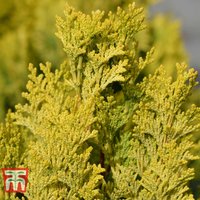
With its bright golden foliage and neat conical shape, this Lawson Cypress is a striking dwarf evergreen which well deserves its Award of Garden Merit from the RHS. Chamaecyparis lawsoniana ‘Minima Aurea’ can be grown as a specimen tree, and is perfect for a small garden or large rockery, reaching just 150cm (59) in maturity.
Berberis thunbergii f. atropurpurea ‘Harlequin’
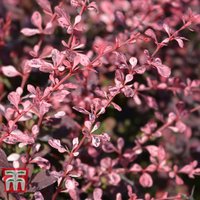
A unique Japanese Barberry, Berberis thunbergii f. atropurpurea ‘Harlequin’ produces deep purple leaves flecked with cream and pink. In spring, small light yellow flowers appear which attract bees, and are followed by glossy dark red berries in autumn. As with many deciduous Berberis this variety has superb autumn colour, with the leaves taking on red
Amelanchier alnifolia ‘Obelisk’
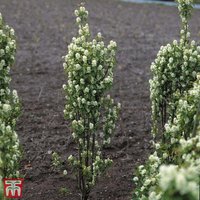
Spectacular displays of intricate star-shaped white flowers form in mid-spring with attractive leaves that unfold red, turning mid-green in summer, then beautiful shades of yellow before falling in autumn. A very versatile, low maintenance and unproblematic tree for smaller spaces, with pruning only necessary if required, which can be carried out after flowering.
Corylus maxima ‘Purpurea’
Chamaecyparis pisifera ‘Filifera Aurea’
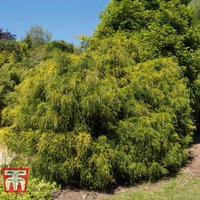
The ever-golden foliage of this distinctive Sawara Cypress makes a wonderful focal point in any planting scheme, whether in a rockery or in the border. It can even be used as hedging. The soft feathery branches of Chamaecyparis pisifera ‘Filifera Aurea’ grow in a shaggy mound when the plant is young, and because it is
Albizia julibrissin ‘Summer Chocolate’
Corylus avellana ‘Contorta’
Buddleja davidii ‘Peacock’
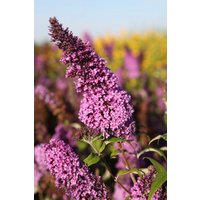
Buddleja davidii ‘Peacock’ bears aromatic blooms that will attract plenty of butterflies and other pollinating insects to your garden. Perfect for growing in patio containers and smaller borders, this compact, dwarf Butterfly Bush is a fraction of the size of traditional varieties yet still maintains a bushy, well branched habit. Buddleja davidii ‘Peacock’ is well







